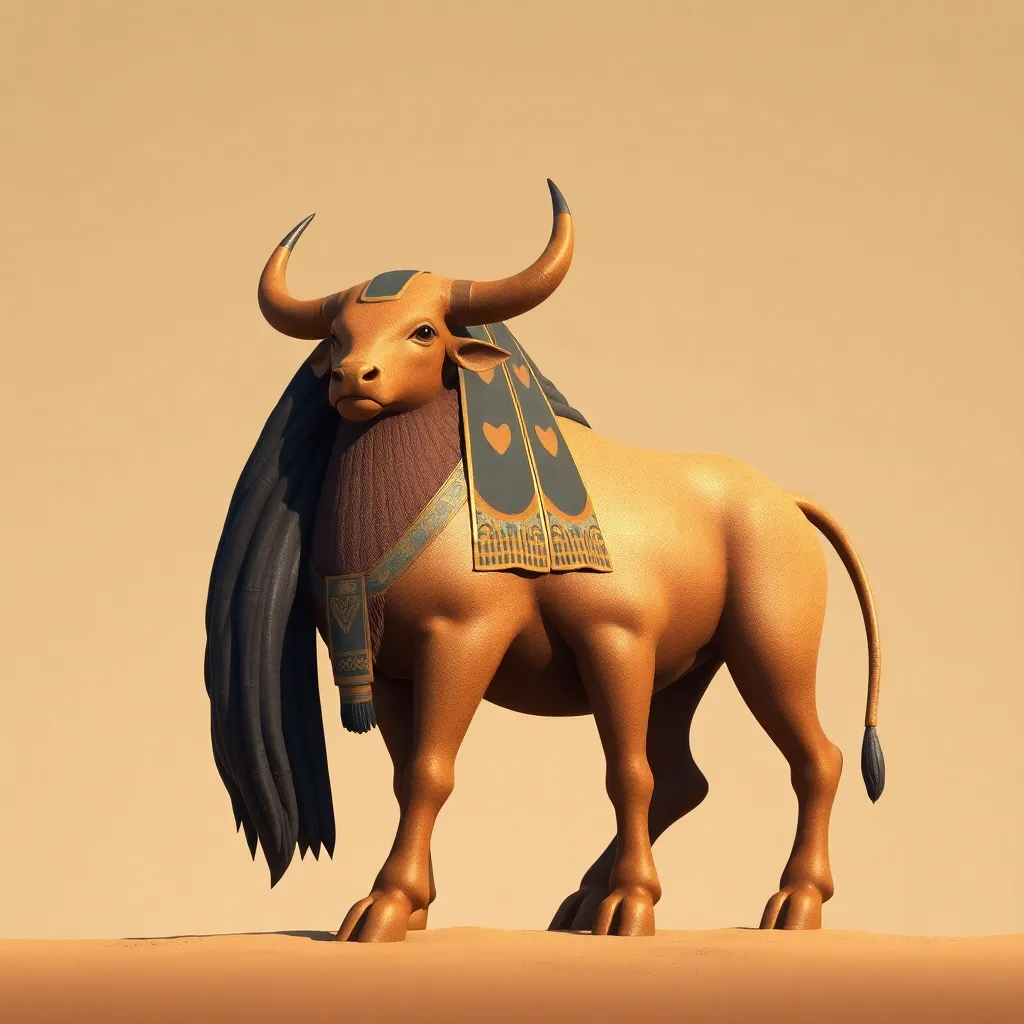The Apis Bull: A Sacred Animal in Egyptian Beliefs
I. Introduction
The Apis Bull, a revered figure in ancient Egyptian mythology, represented strength, fertility, and the divine connection between the earthly and the spiritual realms. This sacred animal was not merely livestock but an embodiment of the god Ptah, the creator deity of Memphis. The Apis Bull held immense significance in ancient Egyptian culture, influencing religious practices, artistic expressions, and societal beliefs. This article will explore the historical background, symbolism, religious practices, and modern cultural representations of the Apis Bull, highlighting its enduring legacy.
II. Historical Background of the Apis Bull
The origins of the Apis Bull can be traced back to the early dynastic periods of ancient Egypt, with references found in texts and artifacts from as early as 3000 BCE. The bull was identified by distinctive physical characteristics, including a black body with white markings, which set it apart as a sacred creature.
In ancient Egyptian society, the Apis Bull was associated with prosperity and fertility, serving as a vital symbol for agricultural success. It was often seen as a direct link to the divine, particularly in the context of kingship and the afterlife. The significance of the Apis Bull evolved through different dynasties, becoming increasingly intertwined with the worship of Ptah and other deities.
III. Symbolism and Attributes of the Apis Bull
The Apis Bull was characterized by several physical traits that aided in its identification:
- A solid black coat
- White markings on the forehead, resembling a crescent moon
- A distinctive tail with a tuft of hair
- Large, powerful horns
Symbolically, the Apis Bull represented:
- Fertility: As a bull, it was a symbol of virility and agricultural abundance.
- Strength: The bull’s formidable presence embodied physical power and dominance.
- The Afterlife: The Apis Bull was believed to protect the deceased and guide them to the afterlife.
Overall, the Apis Bull encapsulated the essence of life, death, and rebirth, making it a central figure in ancient Egyptian spirituality.
IV. Religious Practices Involving the Apis Bull
Rituals and ceremonies dedicated to the Apis Bull were integral to ancient Egyptian worship. These included:
- Annual Festivals: Celebrations were held to honor the Apis Bull, featuring feasting, music, and dance.
- Burial Rites: When an Apis Bull died, elaborate funerary rites were performed, similar to those for pharaohs.
- Daily Offerings: Priests would present food, incense, and other offerings to the bull to ensure its favor.
The role of priests and worshippers in the veneration of the Apis Bull was crucial. Priests were tasked with caring for the bull, ensuring its well-being, and conducting ceremonies. Worshippers would travel from far and wide to participate in the rituals, reflecting the bull’s significance in their lives.
V. The Apis Bull and the God Ptah
The relationship between the Apis Bull and the creator god Ptah was deeply rooted in Egyptian mythology. Ptah was revered as the god of craftsmen and architects, embodying creation and order. The Apis Bull was seen as an earthly incarnation of Ptah, symbolizing his presence and power.
In many depictions, Ptah is shown alongside the Apis Bull, emphasizing their connection. This relationship reinforced the bull’s role as a divine intermediary, linking the mortal world with the gods. The Apis Bull personified the living essence of Ptah, making it a vital aspect of worship and reverence.
VI. Archaeological Discoveries Related to the Apis Bull
Significant archaeological sites associated with the Apis Bull include:
- Serapeum: Located in Saqqara, this burial site housed the remains of numerous Apis Bulls, showcasing the importance of their cult.
- Memphis: The ancient capital of Egypt, where the worship of Ptah and the Apis Bull flourished.
Artifacts and inscriptions depicting the Apis Bull provide valuable insights into ancient Egyptian beliefs and practices. These findings reveal the bull’s central role in religious life, offering glimpses into the rituals and societal norms of the time.
VII. The Apis Bull in Modern Culture
The legacy of the Apis Bull continues to resonate in contemporary interpretations of ancient Egypt. Its influence can be seen in art, literature, and popular culture:
- Art: The Apis Bull has inspired various artistic representations, symbolizing strength and fertility.
- Literature: References to the Apis Bull appear in modern writings, reflecting its historical significance.
- Popular Culture: Films and documentaries often depict the Apis Bull, highlighting its role in ancient Egyptian mythology.
Moreover, the Apis Bull has found a place in current spiritual beliefs, with some modern practitioners drawing on its symbolism for inspiration in their practices.
VIII. Conclusion
In summary, the Apis Bull was a vital symbol in ancient Egyptian beliefs, representing strength, fertility, and a divine connection to the god Ptah. Its significance transcended mere animal worship, encompassing a deep spiritual meaning that influenced various aspects of Egyptian culture.
Reflecting on the enduring impact of the Apis Bull, it is evident that ancient traditions continue to shape our understanding of spirituality and culture today. Preserving the history of such sacred symbols is crucial for appreciating the rich tapestry of human beliefs and the lessons they offer to contemporary society.




